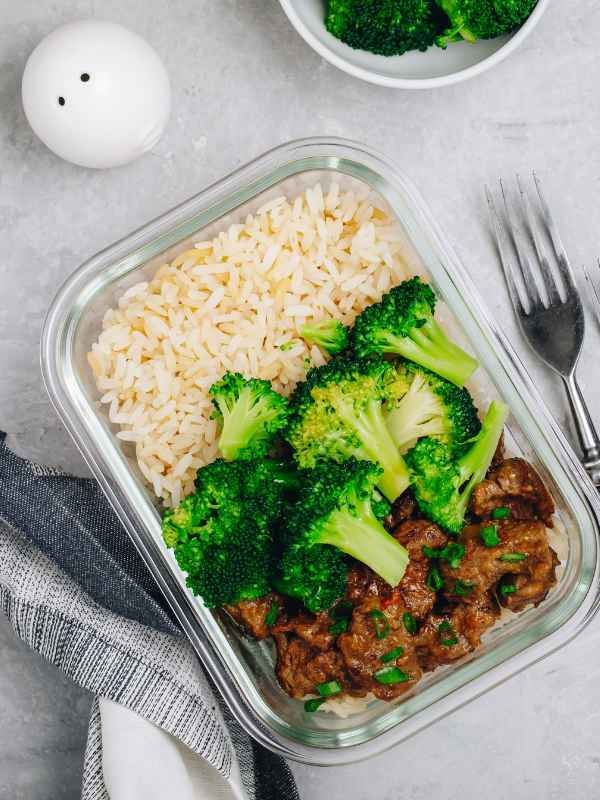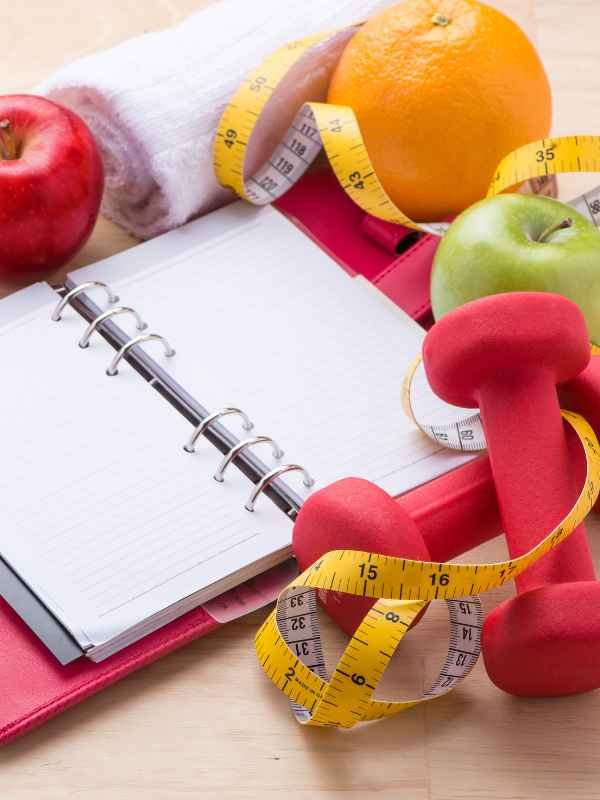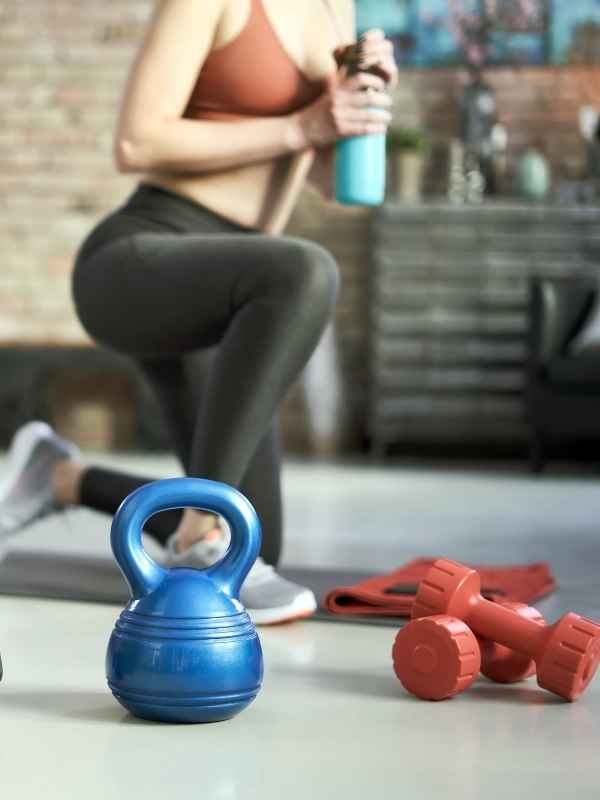The Best Foods for Easy Macro Counting and Tracking
This post may contain affiliate links, which means I’ll receive a commission if you purchase through my link at no extra cost to you.
Looking for the best foods for macro counting and tracking? In this post, I’ll share my top picks for simple, sensible foods that have helped me create a balanced diet. Whether you have weight loss goals or simply want to change your body composition, I highly recommend learning how to count macros.
I don’t normally share too many personal details in my blog posts. However, I’ve received questions about what I’m doing these days, so I thought a blog post would be a great way to share what has been working for me.
Nutrition experts know a balanced diet consists of lean protein, whole grains, fruits, veggies, and healthy fats. However, it can be confusing trying to figure out exactly WHAT we should be eating. Macro counting is simply a way to make sure we are nourishing our bodies with the right foods in a balanced way.
To be honest, I was nervous to switch to macro counting. After constantly being on a variety of diets for the better part of the last decade, I had my doubts about whether or not macros could really provide the flexible dieting approach I desired.
It has been about a year since I moved away from constantly obsessing over weight loss goals. Instead of worrying about those last 5-10 pounds, I have been working on changing my body composition (building muscle).
And I have to say, I have never been happier with how I’m eating. My relationship with food continues to be a work in progress, but I no longer experience feelings of guilt or shame when eating “treat” foods. I can honestly say, I’ve never felt better about how I’m eating!
What is Macro Counting all about?
In case you’re new to macro counting, I’ll go over the basics for you. I think its important to know it is not a one size fits all approach. You can adjust your macros to match your fitness goals and activity level.
For more info and a step-by-step approach to getting started with macros, I highly recommend taking a look at my NUTRITION COACHING services. You don’t need any special ingredients to follow a macro diet and can easily find foods that fit your macros plan in any grocery store.
First, it's important to know there are three macronutrients: carbohydrates, protein, and fats.
These are the nutrients that provide our bodies with energy, which we measure in calories.
Generally speaking, if you consistently eat more calories than your body needs, that excess energy is stored as body fat and you gain weight. If you eat too little calories over time, then you lose weight.
There’s more nuance to it and everyone’s body is different, but we can use scientific calculations to determine how many calories our body needs to maintain its current state and then add or subtract calories to gain/lose weight as desired.
When you work with me, I create a custom calorie/macro nutrition plan for you and I did this myself to determine my daily calories and macro ratio. You can calculate your macros here with my online Macro Calculator.
Once you determine your calorie and macro goals, I recommend using an app on your smartphone. It’s the easiest way to track your macros.
Your calculations will provide you with how many calories, grams of protein, grams of carbohydrates and grams of fat are recommended per day (based on your goals).
I personally use the Lose It app and find it very user friendly. I took my calculations from and created personal goals in the Lose It app, rather than using the built in calculator provided by the app. I do have the premium version of the Lose It app and it has been worth every penny.
Difference between macro counting and counting calories
If you’ve ever tried counting calories before and hated it (like I did!), then you may find macro counting much more sustainable.
When I was purely focused on counting calories, I wasn’t focused on making sure I was getting in enough protein or fiber. When I tried to only count calories, I ended up eating too many carbs and fats. This left me hungry, frustrated and annoyed. It obviously was not a sustainable way of eating for me.
With macro counting you focus not only on a calorie goal, but the macronutrients providing those calories. You can choose to focus on all three macronutrients, but I personally only focus on:
Total daily calorie intake
Daily protein
Daily fiber (not a macronutrient, but found in complex carbohydrates easily tracked and associated with many positive health outcomes)
Focusing on protein and fiber keeps me full and satisfied and I determined my specific daily goals to match my age, activity level, etc. If you do your calculations without learning the purpose of each macronutrient and how it relates to your overall activity level, age, and goals, then you may end up frustrated and not get the results you desire. This is why it may be beneficial to hire a nutrition coach.
I choose to focus on total calories, protein, and fiber because my main goal is to be full and satisfied while maintaining a healthy weight and gaining muscle.
I do not worry about my daily carbohydrates and fat as long as it fits within my calorie goals. Choosing lean proteins and complex carbohydrates (carbs with higher fiber content) naturally helps keep the carbohydrate and fat in an ideal range.
If you’re indulging in more calorie dense sugary/fatty treats, you’ll notice those food choices are going to make it hard to stay within your calorie goal. However, I do find it really easy to fit in the sweet treats I love and still hit my macro goals.
As I stated earlier, it is not a one-size-fits all approach. For example, someone with diabetes who needs to watch their blood sugar may choose to focus on how many grams of carbs and protein they consume with each meal and not worry about the fats.
Someone with high cholesterol may choose to focus on their daily saturated fats intake.
I’m a big fan of keeping things as simple as possible and tracking all 3 just wasn’t worth it to me.
Again, this is all based on your individual needs and if you have any chronic conditions, I definitely recommend working with your healthcare provider and a registered dietitian to determine the best diet for your individual needs.
Focusing on daily calorie intake without tracking macronutrients may work for some people, but I find I make much better food choices and feel more in control of my health goals by tracking macros.
Tips for making macro counting easy
Don’t expect to be perfect right away, give yourself time to learn what foods work for you and how to track accurately
Use a smartphone app and store the app on your first homepage where you can easily access it
Keep it simple by only tracking what really matters in relation to your goals
Learn how to read nutrition labels
Purchase a food scale and learn how to use it properly
Raw + cooked weight differs, so make sure to track using same method you weigh your food items
Use measuring cups as needed
Learn how to calculate your own recipes for tracking in your app (makes it so easy to enjoy casseroles, soups, etc)
Make note of the foods you really enjoy AND help you hit your macros easily, this is something you will learn as you go
If fat loss is not critical to your current health and wellness status, consider eating in maintenance or a very slight calorie deficit while learning how to count macros
When starting out, pre-track your ideal food plan each night for the next day, so you have a plan. This will decrease decision fatigue and make staying on track so much easier. You won’t need to do this forever. Just until you start to see a clear pattern and see what works for you.
Read #1 again!
My Favorite foods for macro counting
Ok, I’m guessing you came to this post for some food ideas and I’ll share my favorite foods for counting macros - these are foods that I find REALLY enjoyable, easy to track, and help me meet my proper macronutrient ratio for the day.
Protein Sources
Greek yogurt - (my favorite is Oikos Pro with 20g of protein per serving). Make sure to watch the sugar content, because some yogurts are just loaded with sugar and don’t have much protein. Aim for at least 10g of protein per serving and the higher protein yogurts tend to be marketed towards health conscious people. Once a day, I mix one container of Oikos Pro with ¼ cup All Bran Buds fiber cereal and 1 cup of strawberries which is basically a protein fiber bomb! It tastes sooo good and is perfect for my macro ratio.
Protein powder - I know some people don’t like shakes, but I have at least one protein shake per day. Its a super EASY way to get protein in. I use Beachbody Vegan Recover which has 20g of protein, PLUS 3g of fiber. I sometimes make a smoothie, but most of the time I’m in a rush and just shake it in ice water. You can also add protein powder to oatmeal, pancakes and other recipes to amp up the protein content.
Eggs/egg whites - what can I say? I love eggs! I love them hard boiled, over easy, scrambled (throw in a ¼ cup of low fat cottage cheese to your scrambled eggs, so good and bumps up the protein!). Omelets can be a great quick and easy meal anytime of day. I also love to mix whole eggs with egg whites to amp up the protein with less calories. Egg whites alone taste very bland and rubbery to me, but if you like them solo that is a great protein choice. I know some people add egg whites to oatmeal and smoothies, as well.
Chicken breast - each week I cook up a batch of slow cooker shredded chicken. It can be eaten as is, or used in salads, soups, wraps. Chicken breast is one of the best protein sources and very easy to prep and have on hand. Also, nothing wrong with grabbing a rotisserie chicken at the grocery store!
Ground beef/chicken/turkey/pork - burgers are in constant rotation in my house. With some simple seasoning, it is a tasty protein source for a quick meal or meal prep option. I do use my kitchen scale to measure out the burgers, so I can track accurately.
Salmon - I find salmon to be incredibly filling and if you have checked out my recipes, then you know I have many salmon recipes on the blog. Salmon is full of heart healthy omega fatty acids.
Carbohydrates
By focusing on these carb sources, I am getting more than just energy, I’m also getting a ton of fiber to help me reach that daily fiber goal. Carbs that also provide a good amount of fiber are known as complex carbohydrates.
Whole grain bread - I’m currently obsessed with Dave’s Killer Good Seed bread. I make avocado toast with egg almost every day. So good! Perfect for sandwiches, only 70 calories and delicious flavor.
Fruits - I love fruit and try to eat whatever is in season. Please unfollow anyone on social media who tells you fruit will make you fat or is bad for your blood sugar, etc. Fruits are full of micronutrients and a great source of fiber. Plus, you can easily take them on the go!
Protein pasta - over the past few years, many companies have come up with all kinds of pastas with added protein. My favorite is barilla protein plus pasta. It is a great source of carbs, protein and fiber! See what’s available at your store and read the nutrition label to be sure its a good fit for your macro goals. It tends to be more expensive than regular pasta, so I keep an eye out for sales and stock up. Protein is the most expensive macronutrient when it comes to your grocery budget, so keep in mind you’re getting more than just carbs in each box of protein pasta.
Rice - I eat a LOT of rice. Jasmine rice, brown rice, etc. I know white rice is often demonized by fad diets, but when you look at the calorie, macronutrient and fiber content of white vs. brown rice, you’ll see it is really negligible. Just choose what you like and works with your overall macro goals.
Sweet potatoes and potatoes - my favorite thing about sweet potatoes and white potatoes is they really keep me full and satisfied. Yes, they taste delicious, but they are super easy to track and whip up a quick and easy meal. I like to microwave them or make air fryer fries. If you have been following low-carb eating for years, please don’t be afraid of potatoes! They are so good for you and such an easy food to include in your macro counting.
Healthy Fats
Avocado - I love avocado and its super easy to track. I have ¼ -½ an avocado daily. Not only is it a healthy fat, but it is also a great source of dietary fiber
Olive Oil - I use olive oil for cooking almost anything. Make sure to track any added oil you are using for cooking, these are calories that can add up quickly!
Peanut butter/nuts - I love love love peanut butter. One of my favorite pre-workout snacks is the Dave’s Killer Good Seed bread, 1 tablespoon of peanut butter, sliced banana and honey. Peanut butter and nuts can be an added source of protein with those healthy fats!
Keep in mind some foods are great sources of more than one macro. Salmon is a wonderful source of protein and healthy fats. Beans are a great source of carbs and protein. This is why tracking in an app like Lose It can really educate you on exactly what you’re putting in your body and how it affects you.
My Personal Macro Counting Goals
Sharing for reference, because I know some of you are going to be absolutely SHOCKED at the amount of calories you can and should be eating for a healthy diet. I about died when I did my calculations and saw it was well over 2000 calories per day!
After years of dieting and trying to eat anywhere from 1400 - 1800 calories per day, I just thought it was SO much food!
Also, I had to get comfortable with the fact that the scale would go up slightly JUST from the fact that I was eating a more substantial diet. The food that is in your digestive track adds weight to the scale, so please remember that!
My current target numbers
Total calories per day - 2200
Protein goal - 130g
Fiber goal - 30g
Carbs + fat - tracked, but mostly ignored
For reference, I am 5’5” tall with a curvy body shape.
I also think it’s really important to add that I do NOT obsess over the numbers. I aim to get 100g of protein and 20g of fiber in by 3pm. This keeps me so full and satisfied, it prevents cravings and makes it easy to stay on track and prevent overeating at dinner. If I hit 110g of protein one day and 150g of protein another, I know it all evens out. If obsessing over numbers causes you stress and anxiety, then this may not be the best option for you.
Additionally, I’m really tuning into eating mindfully. If I”m hungry, I eat, if I’m full I don’t force myself to finish meals. After years of thinking I couldn’t trust my own intuition when it comes to food, this feels so amazing!
Since I take an “all foods fit” approach, meaning I don’t view any foods as “good” or “bad”, I now enjoy my treats without any guilt or shame or feeling like I’m going “off plan”. My favorite treats are gummy candy, chocolate, cupcakes, and ice cream (yes, I have a sweet tooth, haha!). I used to binge terribly on sweets when dieting, but now that I know I can have a little every day, I haven’t binged in months. Additionally - I truly enjoy these extra foods without feeling guilt or shame for consuming them.
Workouts
Because I’m building muscle, I am combining my macro diet with a 30 minute/5 days per week strength training program. For cardio, I aim for 7500 steps per day and try to get outside for walks or use my elliptical.
At the time of this article being published, I am almost fully recovered from breaking my ankle in 3 places (yes, it totally sucked and I am SO glad to be back to a more normal routine!). This certainly put a damper on my fitness routine for 2+ months, but I was still able to focus on following my macros plan. It just looked a bit different, because I was not lifting weights.
I hope you found this blog post helpful in your macro counting journey. You can follow me on Instagram and listen to my podcast for more ideas. I love to share food ideas and talk about realistic, sustainable solutions for living healthy and I plan to share more posts on macros, plus update all my recipes with macros nutritional info.


















